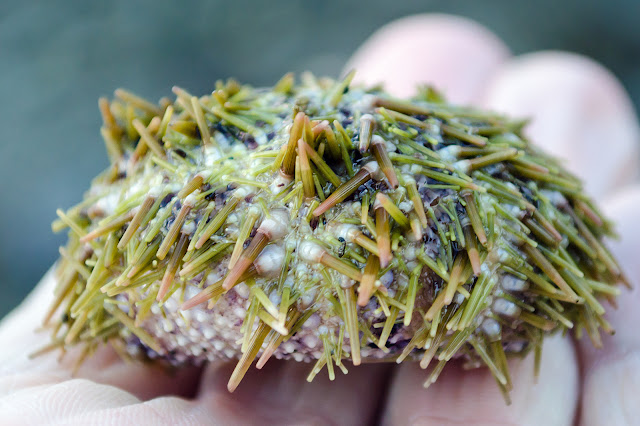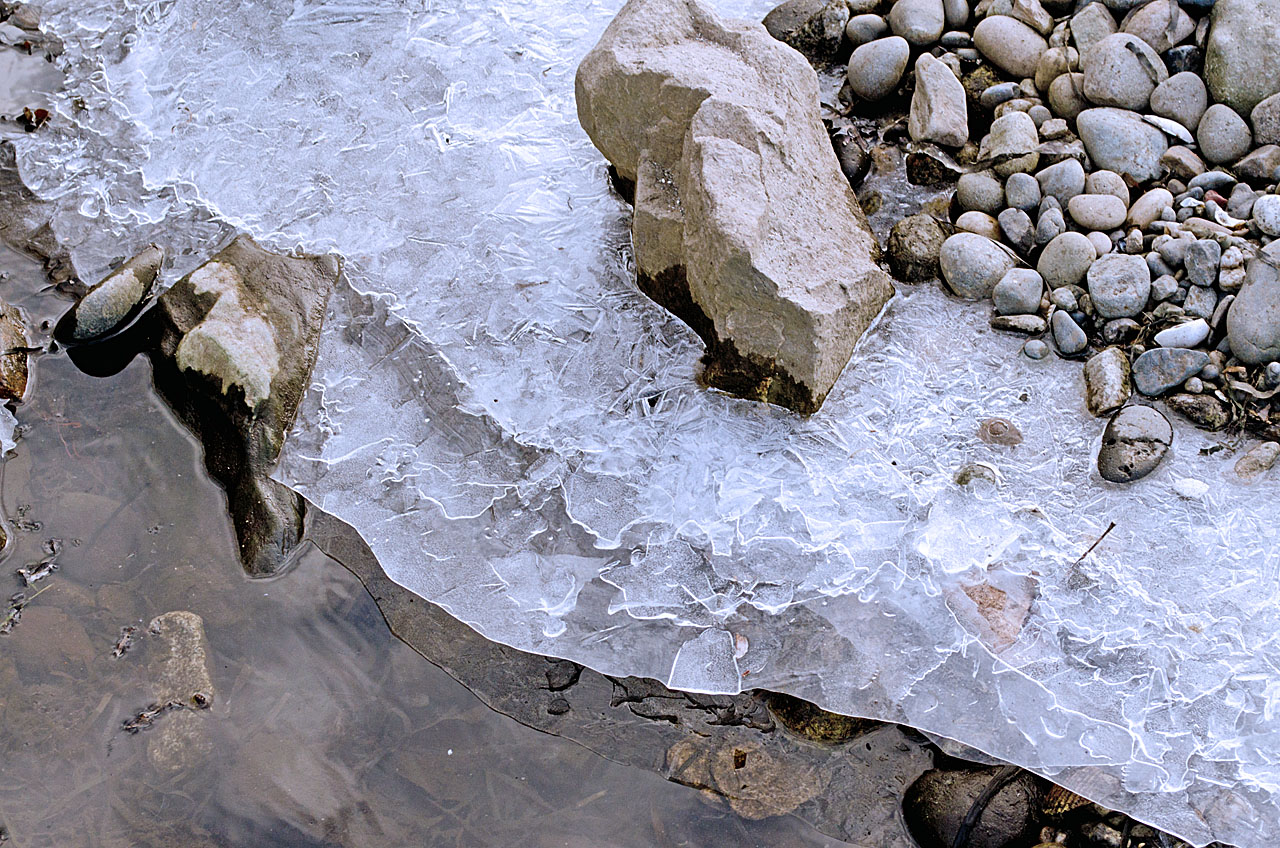What does lichen do in the winter time? We see changes year-round in the plants, even the evergreens; they have a yearly cycle, there are fresh green tips in the spring and cones on the ground in the fall. Mushrooms come and go, each on their own schedule. But the lichens don't seem to change, except to get greener when it rains and fall off trees when the wind is strong. What do they do when it snows? Do they mind the cold?
 |
| Cladonia lichens on the end of a fence rail. |
Do they just sit there waiting for spring? Do they keep on growing all winter? (Slowly, slowly, as always.) What about those fruiting bodies I see on this rail end? Are they producing spores even now?
How did we ever manage before Google?
No, they don't mind the cold. They even grow in Antarctica. They're more likely to go dormant in the dry spells of summer.
Among their many adaptations, lichens that can tolerate freezing temperatures do so by having ice nucleation sites in their tissues that ensure that ice crystallizes in between cells and not within cells. Ice crystallizing inside cells is what causes them to rupture. (Fosters.com)
 |
| Frozen leafy lichen. December, 2021 |
Yes, they keep on growing. As the leafy canopy thins out, more sunlight reaches them, and photosynthesis goes on.
And yes, they do keep on producing spores all winter. In fact, this is when they are most productive. A study of a variety of lichens from Japan, Britain and Canada, where we have good cold winters, found that,
Winter and spring were found to be good seasons for spore discharge of the temperate lichens studied.
And that, surprisingly to me,
We found that most of the species we investigated, ... had little or no capability for spore discharge in summer. (J.Hatori Bot. Lab)
Another site mentions Cladonia sp. as winter spore producers.
 |
| Lichen on rock. The black dots are fruiting bodies. January, 2023 |
Oh, and that rail end: I took a photo of it almost exactly a year ago, well above freezing, and dry. It is almost the same now, just a bit battered, but it has spread over areas that were bare last year.
~~~~~~~~~~~~~~~~
¿Qué hacen los líquenes en el invierno? Vemos cambios en todo el año en las plantas, hasta en los árboles de hoja perenne; éstos en la primavera estrenan hojas nuevas en los extremos de las ramas; en otoño sus piñas cubren el suelo alrededor. Los hongos van y vienen, cada variedad según su calendario preferido. Pero los líquenes no parecen cambiar, aparte de ponerse más verde en dias de lluvia y caerse de los árboles cuando el viento sopla fuertemente. ¿Pero qué hacen cuando cae nieve? ¿Les molesta el frio?
Fotos:
- Líquenes Cladonia en el extremo de una valla, con nieve.
- Líquenes foliosos congelados. Foto de diciembre de 2021.
- Liquen en una piedra. Las manchas negras son los cuerpos fructíferos. Foto de enero de 2023.
Entre sus múltiples adaptaciones, los líquenes que toleran temperaturas bajo cero (C) lo logran por tener sitios de nucleación de hielo en sus tejidos, los cuales hacen que el hielo se cristalice en el espacio entre las células y no dentro de las células mismas. Hielo que se cristaliza dentro de las células es lo que hace que se revienten. (Fosters.com)
El invierno y la primavera fueron buenas temporadas para el descargamiento de esporas entre los líquenes de zonas templadas que se estudiaron.
Descubrimos que la mayoría de las especies que investigamos ... tenían poca o ninguna capacidad de descargar esporas en el verano. (J. Hatori Bot. Lab.)



































.jpg)











